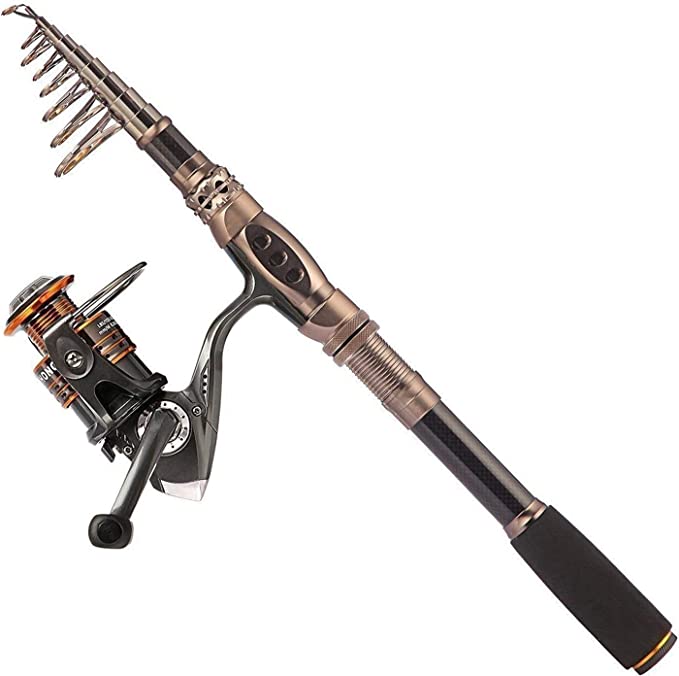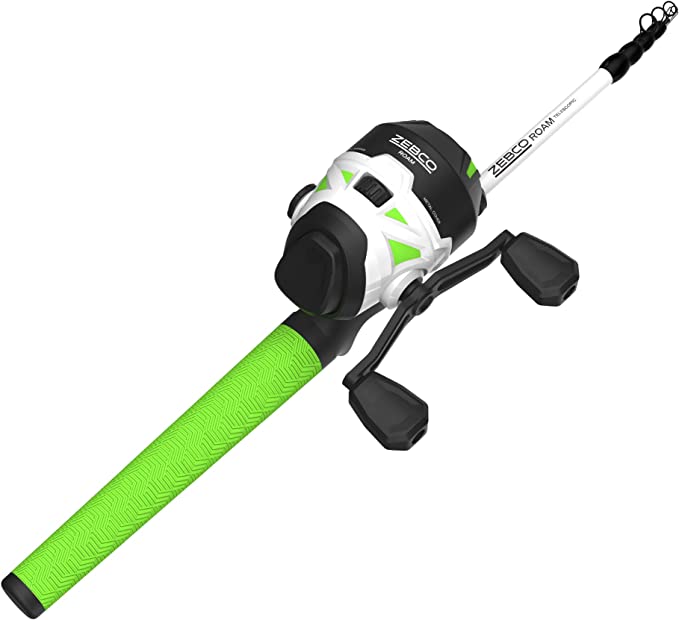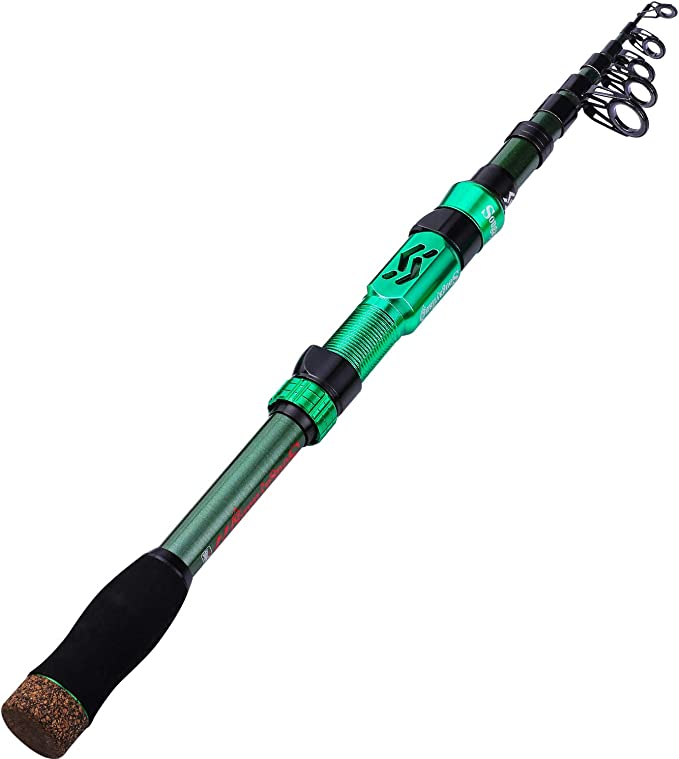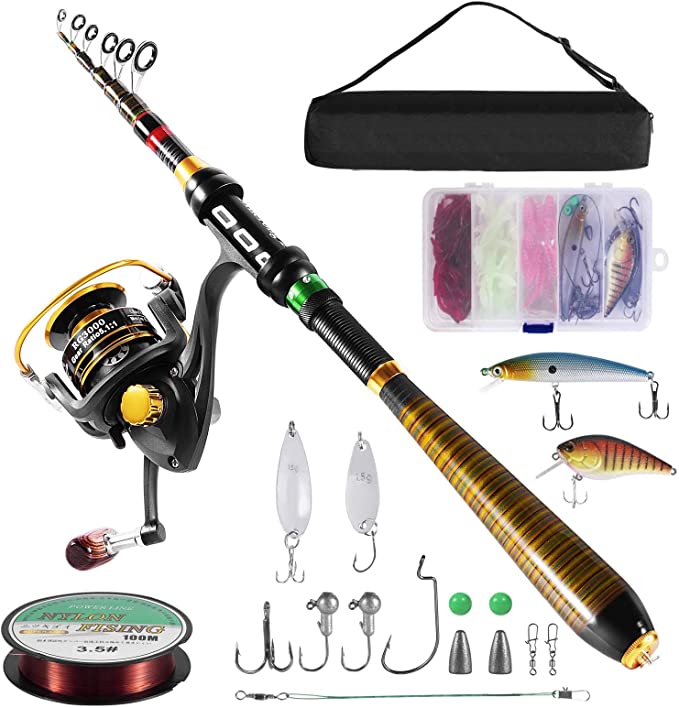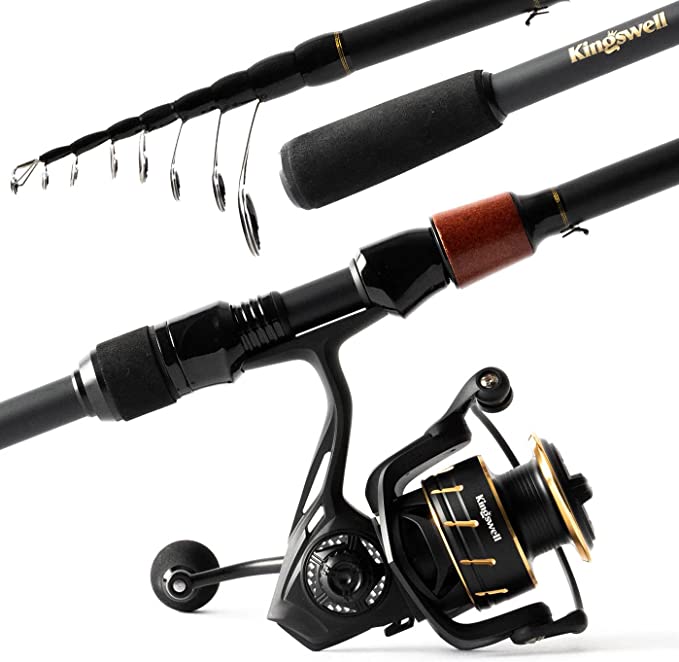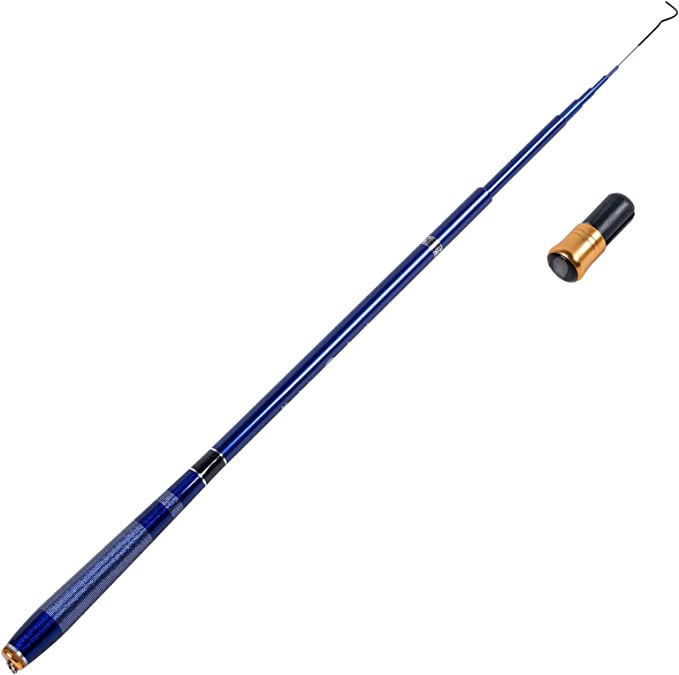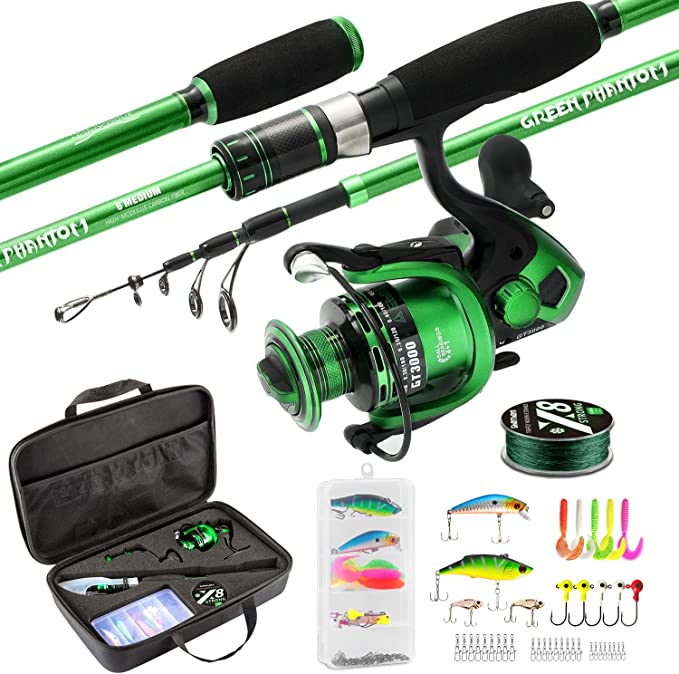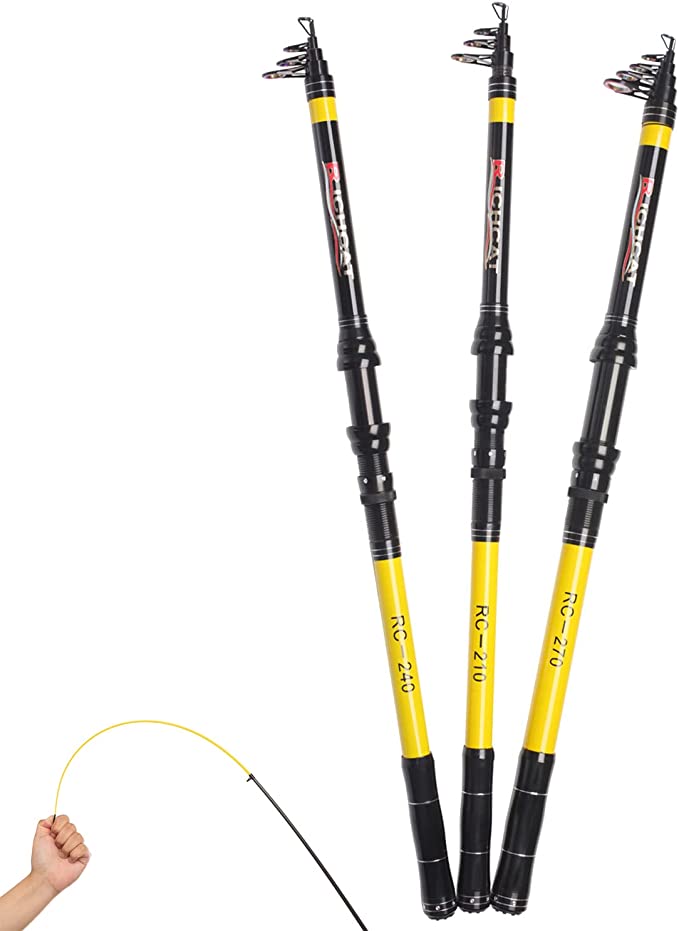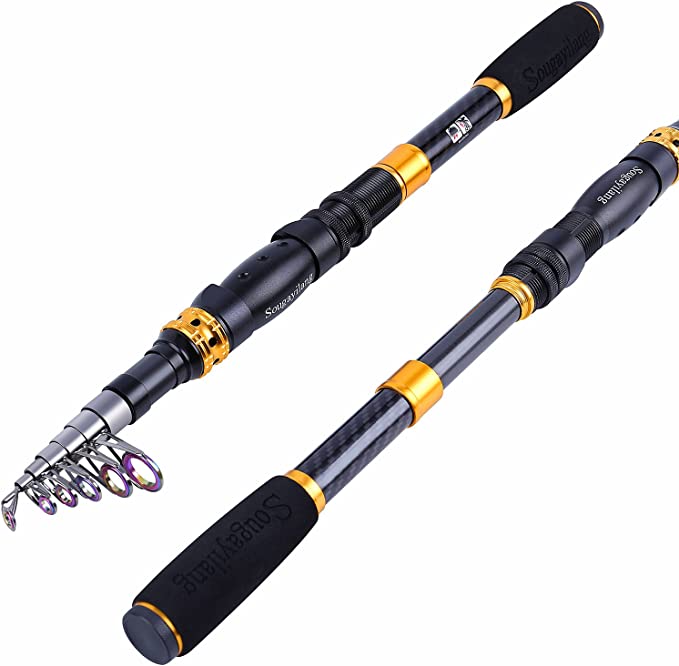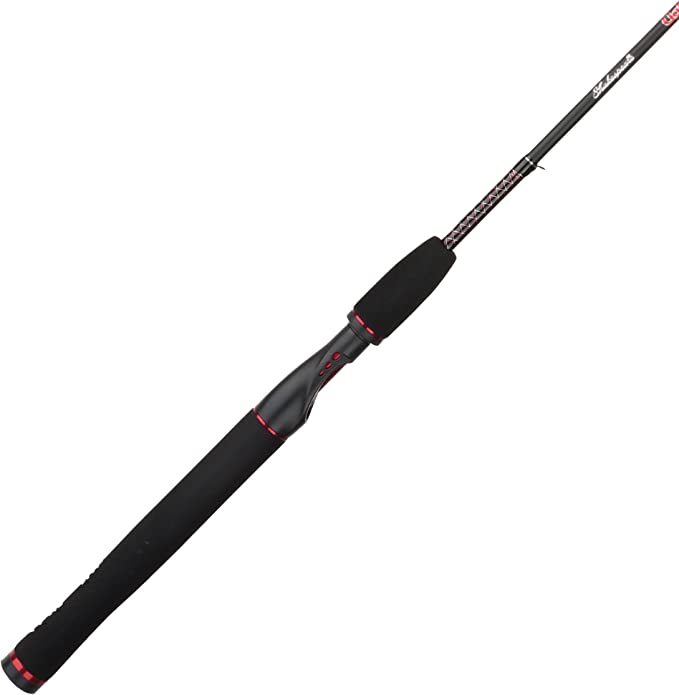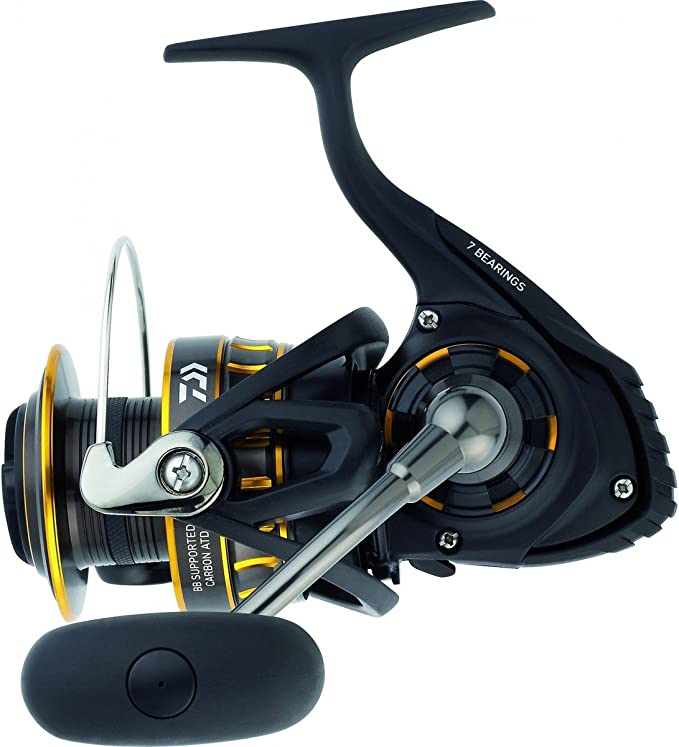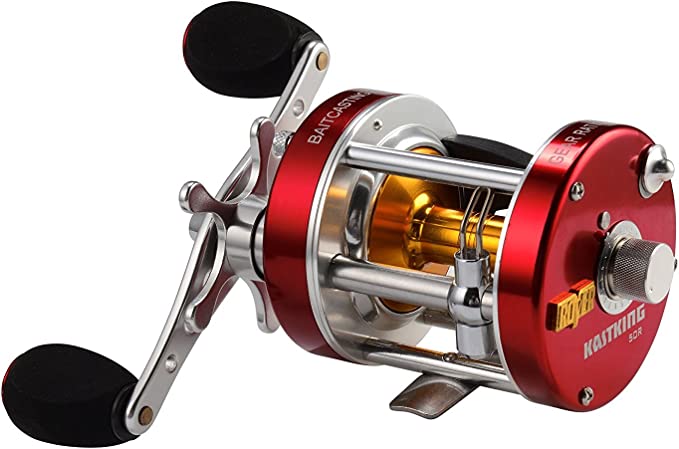RiToEasysports Fishing Rod: The Engineering and Science of the Portable Angler's Choice
Update on Aug. 1, 2025, 5:11 p.m.
In the world of outdoor pursuits, few activities are as timeless as fishing. Yet, the gear that has accompanied anglers for centuries has not remained static. The modern angler demands a new kind of tool: one that respects tradition but embraces the need for a dynamic, on-the-go lifestyle. This is the philosophy behind the RiToEasysports Fishing Rod, a product that may appear simple but is, in fact, a testament to the elegant marriage of material science and engineering design.
The Revolution of the Telescopic Rod: A History of Compact Genius
Before the advent of modern composites, fishing rods were long, cumbersome affairs, often made of split bamboo. The very act of transportation was a logistical challenge. The need for a more convenient solution led to the development of the telescopic rod, a marvel of mechanical engineering. By designing a series of progressively smaller sections that nest within one another, engineers created a rod that could be carried in a backpack or a small car without a second thought. This wasn’t just a design choice; it was a fundamental shift that made fishing more accessible to a wider audience, from urban dwellers to backcountry explorers.
The challenge, however, was maintaining the rod’s structural integrity and performance. A traditional two-piece rod has a smooth, continuous taper. A telescopic design introduces “ferrules,” or joints, which can be points of weakness if not engineered properly. The RiToEasysports rod’s construction is a prime example of how modern manufacturing and material choice overcome this. Its sections fit snugly, distributing the stress of a fighting fish evenly across the entire rod blank, allowing for reliable performance that rivals its multi-piece counterparts.
Glass Fiber: The Unsung Hero of Rod Materials
The RiToEasysports fishing rod, built from what the manufacturer describes as “glass steel,” is a modern iteration of a material that has a rich history in fishing. Though graphite and carbon fiber dominate the high-end market, it was glass fiber that first revolutionized the industry, replacing bamboo and steel rods in the mid-20th century.
Glass fiber, a composite material made of plastic resin reinforced with woven glass strands, is prized for its incredible durability and flexibility. It has a lower modulus of elasticity compared to carbon fiber, meaning it can bend and absorb more force before breaking. This quality is crucial in fishing, as it allows the rod to absorb sudden shocks from a powerful fish, protecting both the line and the angler’s gear. It’s this inherent toughness that makes glass fiber rods particularly popular for a wide range of applications, from heavy-duty trolling to the versatile demands of surf and sea fishing. The material choice in the RiToEasysports rod is a deliberate one, prioritizing resilience and reliability—qualities essential for a multi-purpose tool that needs to withstand varying conditions.
The Science of the Hand: EAV and the Ergonomics of Grip
An angler’s connection to their rod is through the grip, and the material of that grip is critical to both control and comfort. The handle of this rod is made of EAV (Ethylene-Vinyl Acetate), a lightweight, durable, and closed-cell foam. Unlike traditional cork or dense rubber, EAV offers a superior balance of firmness and comfort. The closed-cell structure of the foam means it doesn’t absorb water, ensuring the grip remains non-slip and secure even when wet, a common occurrence on the water.
This material choice is rooted in the principles of ergonomics, the science of designing equipment to maximize human performance and well-being. A comfortable EAV grip minimizes hand fatigue during long fishing sessions and provides a tactile, sensitive connection to the rod blank, allowing the angler to feel subtle vibrations transmitted from the line. This enhanced sensory feedback is vital for detecting light bites, turning the rod from a mere tool into a natural extension of the angler’s hand.
The Right Tool for Every Water: Matching Length to Physics
The variety of lengths available—from 1M to 2.3M—is not arbitrary. It’s a practical application of physics and an understanding of different fishing environments. A rod’s length dictates its leverage and casting ability.
- Shorter Rods (1M-1.2M): These are specifically designed for ice fishing. The short length is ideal for the confined space of an ice shanty and provides the precise control needed for jigging. The physics are simple: a shorter rod allows for more direct, vertical action and is less affected by wind.
- Longer Rods (1.5M and Up): As the length increases, so does the mechanical advantage. A longer rod allows an angler to cast farther, cover more water, and handle larger fish by distributing force more effectively. This is why longer rods are the go-to choice for lure fishing and surf fishing, where distance is key and the potential for a powerful catch is higher.
The RiToEasysports rod embodies versatility by offering this range, allowing a single product line to cater to the diverse demands of the global fishing community.
In the end, the RiToEasysports Fishing Rod stands as a compelling example of modern outdoor gear. It’s not just a collection of parts but a thoughtful system designed to provide portability without compromising performance. It’s a tool that understands the science of the catch and the art of the journey, ensuring you’re always ready to answer the call of the wild, wherever it may lead.
